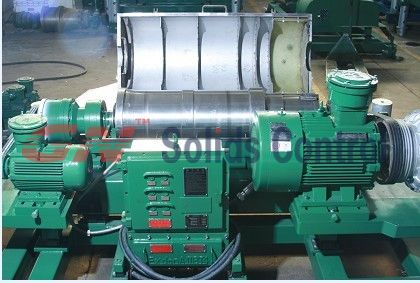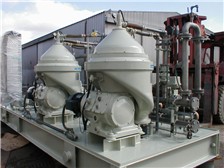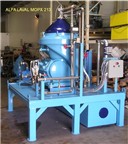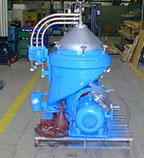The setback at Calvert Cliffs not the end of the nuclear renaissance. There’s a lot of good news about it.
sailing fleetDespite a very bad two weeks of sour news out of Maryland about Constellation’s Calvert Cliff’s project, there is still a lot of good news about the nuclear renaissance in the U.S. The move to build new reactors continues to unfurl its sails and set a course to replace fossil fuels. The rest of the world, especially Asia, realize that nuclear energy is a key to reducing carbon emissions and their impact on global warming.
Constellation’s recent retreat from nuclear energy is not a symbol for setbacks in the rest of the nation. Here are some recent reports.
Duke says the future will be nuclear
Duke Energy must replace its aging fleet of coal-fired power plants with new nuclear reactors according to Christopher Fallon, VP for Nuclear Development at Duke Energy (NYSE:DUK) Speaking to the Nuclear Construction Summit held in Charlotte, NC, earlier this week.
Fallon said it is on track to build a new nuclear reactor power station near Gaffney, SC, and that it is expected to enter revenue service in 2021. He added the firm is working with Areva to assess the feasibility of building a new reactor in Piketon, OH.
greenhouse_gasesFallon said there are important reasons why Duke will keep its commitment to nuclear energy.
* Coal has a limited future given its impact on GHG
* There will be taxes and carbon caps on all fossil fuels
* Solar and wind can’t meet baseload demand for electricity
“We have to modernize and decarbonize our fleet and new nuclear has to be part of that strategy.”
Still, there are challenges ahead. Congress did not pass climate legislation and natural gas prices have dropped over the past year. Electricity demand is down now, but may surge by the time a new reactor comes online in the next decade.
Despite these obstacles, Fallon said Duke is ready to start construction on the William States Lee III twin reactors without a loan guarantee. An NRC license for the project is expected in 2013.
Duke may also seek to partner with Scana on the new twin reactors to be built at the utility’s V.C. Summer Station in South Carolina. Like Duke, Scana has said it will proceed without a loan guarantee from the federal government.
Florida regulators support rates for new reactors
The Florida Public Service Commission has told Progress Energy (NYSE:PGN) that it can continue to include a portion of its billing to customers for a new nuclear power station to be built in Levy County on the sunshine state’s west coast. The project calls for twin Westinghouse 1,100 MW Westinghouse LWR reactors.
OrangesProgress spokesperson Cherie Jacobs told financial wire services the commission’s decision, “confirms the state’s commitment to state-of-the art nuclear power as a strategic asset.”
At a rate hearing last August, the anti-nuclear Southern Alliance for Clean Energy had argued against cost recovery for expenses to license and build the plant. Gary Davis, an attorney for the group, told the PSC all cost recovery should be denied because Progress had not made the case for the need for the new reactors.
The cost recovery measure that authorizes the charge in customer bills was enacted by the Florida legislature in 2006. It dramatically lowers the cost of new nuclear plants by allowing the utility to recover costs as the reactor is being built.
Otherwise, the project would have to take on huge loans with matching interest charges that would accumulate until the plant entered revenue service. Progress expects to get the NRC license for the new project in late 2012.
The construction of two new reactors at FPL’s Turkey Point location near Miami is also expected to benefit from the same type of rate ruling.
USEC gets term sheet for loan guarantee
USEC (NYSE:USU) said in a statement this week that the Department of Energy has completed its technical review of the American Centrifuge Plant to be located in southern Ohio.
Uranium-hexafluorideFrank Munger reports from the Knoxville News, and his blog Atomic City Underground, that the Dept. of Energy had informed the company that it had "largely completed" the technical review of the application for a $2 billion loan guarantee for the American Centrifuge Project.
It is expected to be built as a 3.5 million SWU gas centrifuge uranium enrichment plant.
USEC said DOE is now proceeding with the next stage of the loan guarantee program.
"DOE has provided USEC with a draft term sheet that will serve as a framework for discussions between USEC and the DOE," the company said.
GE-Hitachi inks deal for laser enrichment
The Tennessee Valley Authority (TVA) has signed a 10-year contract with GE-Hitachi (GEH) potentially worth $400 million for enriched uranium to be produced at the GEH Wilmington, NC, plant.
GEH clarified the agreement is “nonbinding” but that the two organizations have come to a meeting of minds on commercial terms.
UraniumSalesThe facility has not yet been built, but GEH has applied for an NRC license for it. Tammy Orr, the GE Executive in charge of the laser enrichment project, told a North Carolina newspaper in September the firm expects to get the NRC license by the end of 2011. She said this milestone, if achieved, will allow the firm to start construction in 2012.
The Global Laser Enrichment project is a joint venture with 51% owned by GE, 25% by Hitachi, and 24% by Cameco, a Canadian uranium mining company.
GE-Hitachi ESBWR passes safety milestone in NRC review
GE Hitachi Nuclear Energy (GEH) announced Oct 26 its 1,520 MW Economic Simplified Boiling Water Reactor (ESBWR), has passed a crucial safety review performed by an advisory committee for the U.S. Nuclear Regulatory Commission (NRC). Completion of this review clears a key hurdle in the company’s bid for design certification of the ESBWR. It sets the stage for final NRC certification by the fall of 2011.
In its October 20, 2010, letter, the NRC’s independent Advisory Committee on Reactor Safeguards (ACRS) issued its safety recommendation for the ESBWR design, which is required before a new reactor technology can achieve final certification.
“The ESBWR design is robust and there is reasonable assurance that it can be built and operated without undue risk to the health and safety of the public,” ACRS Chairman Said Abdel-Khalik wrote in the agency’s safety recommendation.
GEH and Michigan utility DTE Energy are collaborating on a potential ESBWR project adjacent to its existing Fermi 2 nuclear plant, 35 miles south of Detroit. The NRC is currently reviewing the utility’s license application for the proposed “Fermi Unit 3.” DTE Energy, which operates Detroit Edison, Michigan's largest electric utility, has not yet made a decision to proceed with construction of the new reactor.
India in talks to build six ESBWR reactors
ElephantOn the other side of the world, GE Hitachi has signed agreements in India with Tata Consulting Engineers, Nuclear Power Corporation (NPC), Bharat Heavy Electricals Ltd (BHEL) and Larsen & Toubro for involvement in India's nuclear new build.
GEH and its Indian partners will share expertise and resources with a goal to build new reactors using the GEH ESBWR.
Kishore Jayaraman, GE Energy's India Region Executive, (left) told Business Standard they've been talking to NPC for a year.
Kishore Jayaraman "There are ongoing discussions for six ESBWR units at a designated site, with a desired commercial operation date of approximately 2019 for the first unit,"
Last February GE-Hitachi announced it planned to acquire special steel components and large forged parts from Larsen & Toubro (L&T). The Hindu also reported that L&T is also in a joint venture with NPCIL to set up a nuclear components manufacturing center in Gujarat. This is also the most likely “designated site” for the six ESBWR reactors.
L&T plans to build a capability to produce ingots weighing up to 600 tons and a heavy forge shop with a world class press rivaling the one at Japan Steel Works. That competition won't come on line right away, but it will come.
GE-Hitachi executives said the deal not only helps India, but also provides export earnings. Indian companies reportedly can make nuclear components for as little as half the price of sourcing them from the U.S.
Jack Fuller, CEO, told the Hindu Feb 2, "It can be part of our supply chain for India and other markets."
Separately, this week the Indian government signed an international agreement on civil liability possibly opening its $150 billion nuclear energy market to U.S. firms. U.S. President Obama will visit India in November and hopes to announce new nuclear deals during the trip.
source: theenergycollective.com














